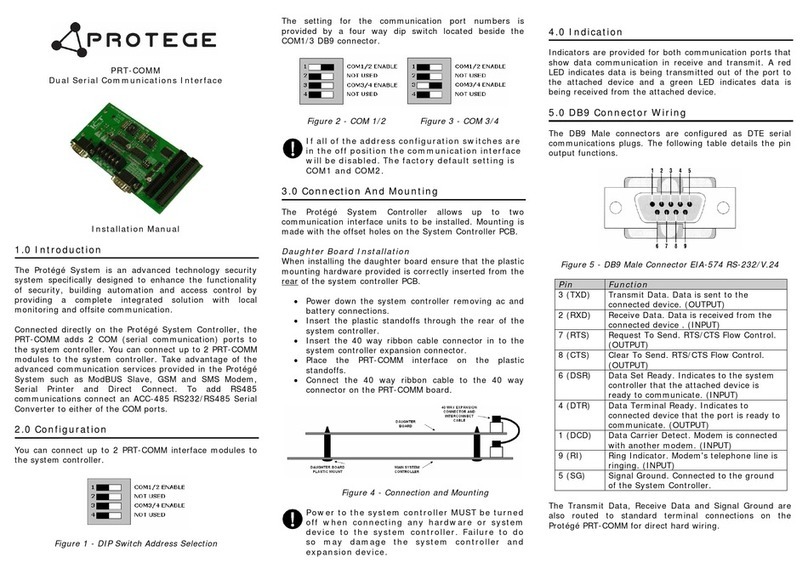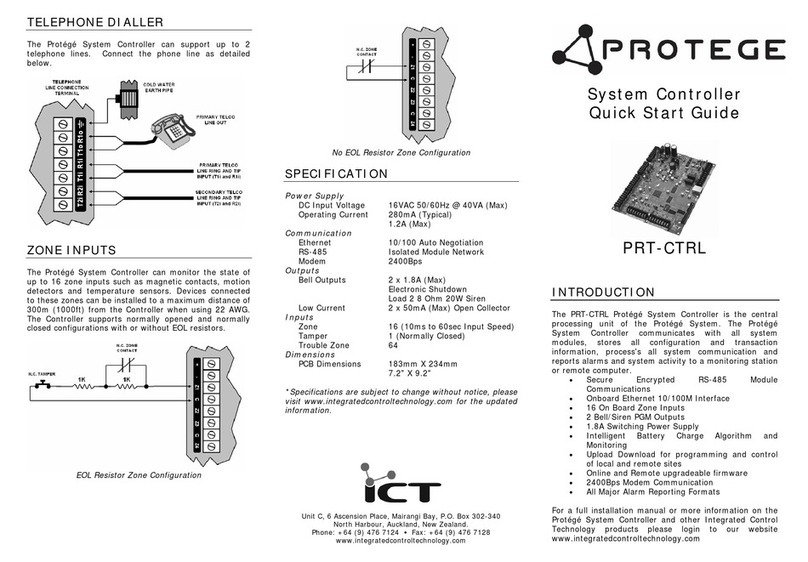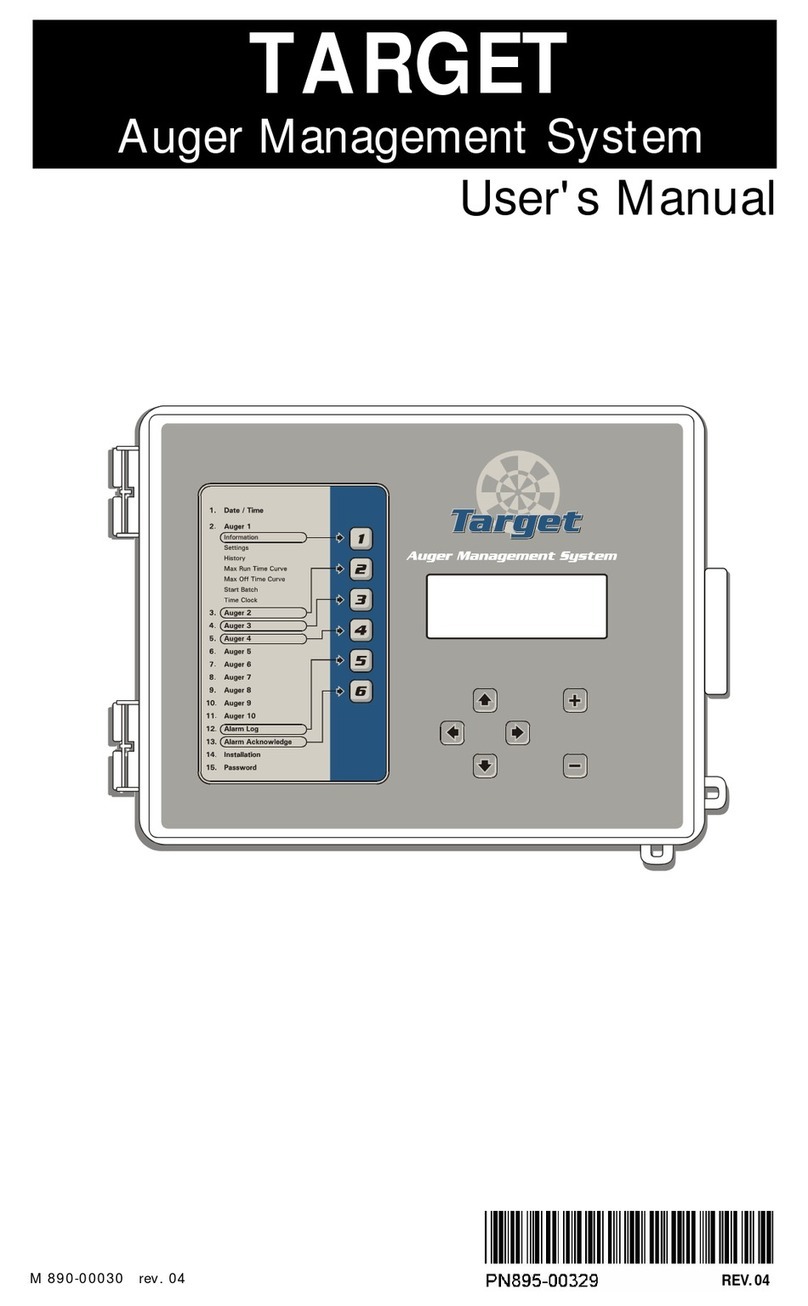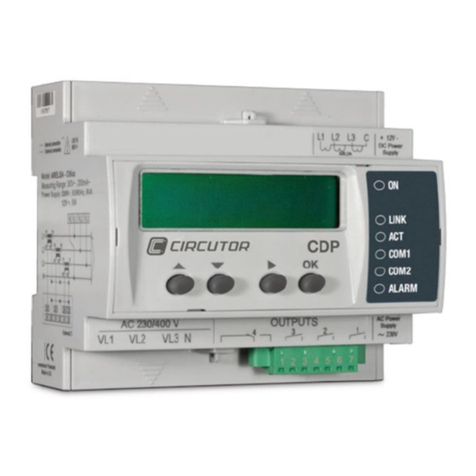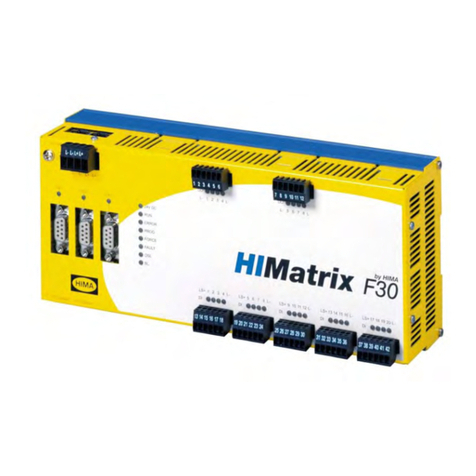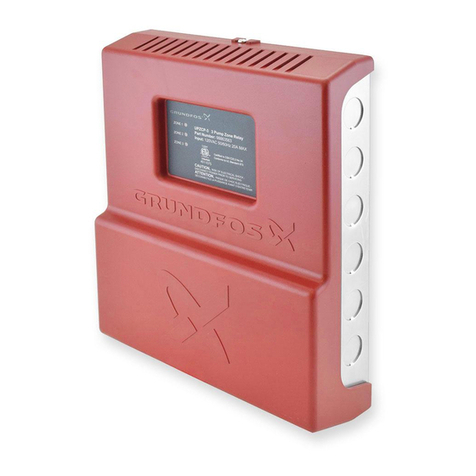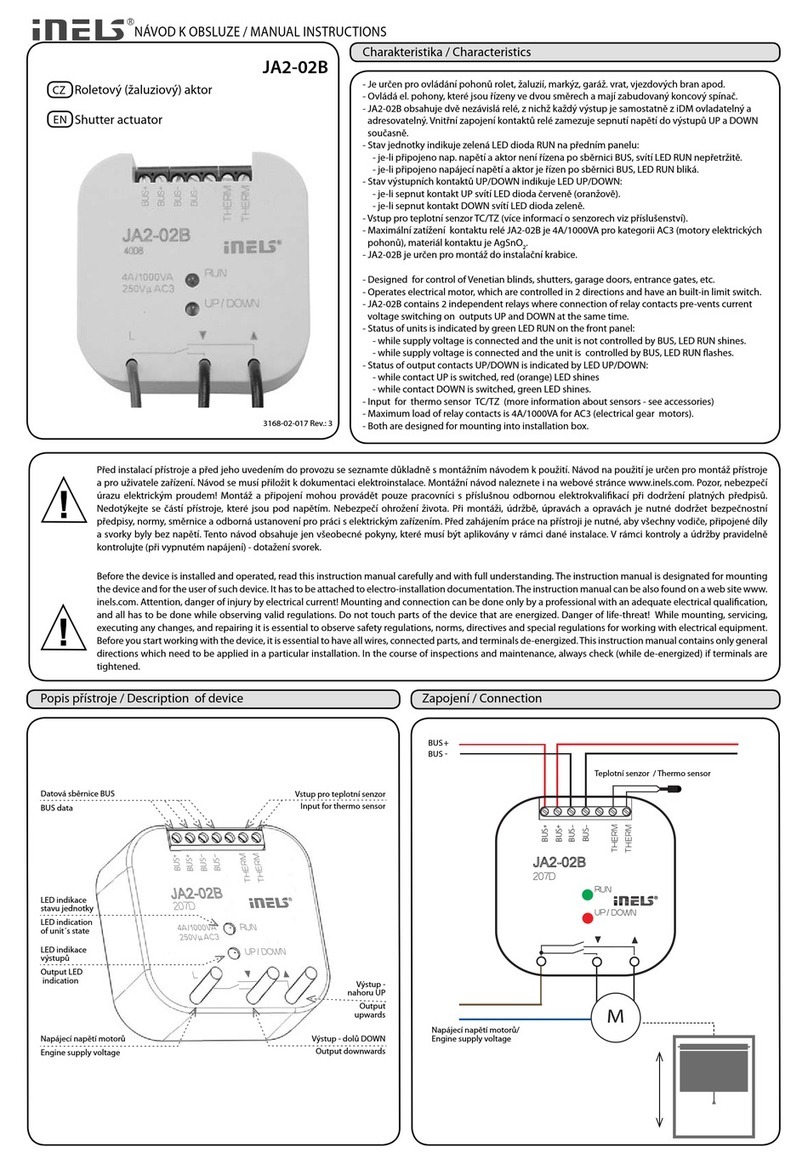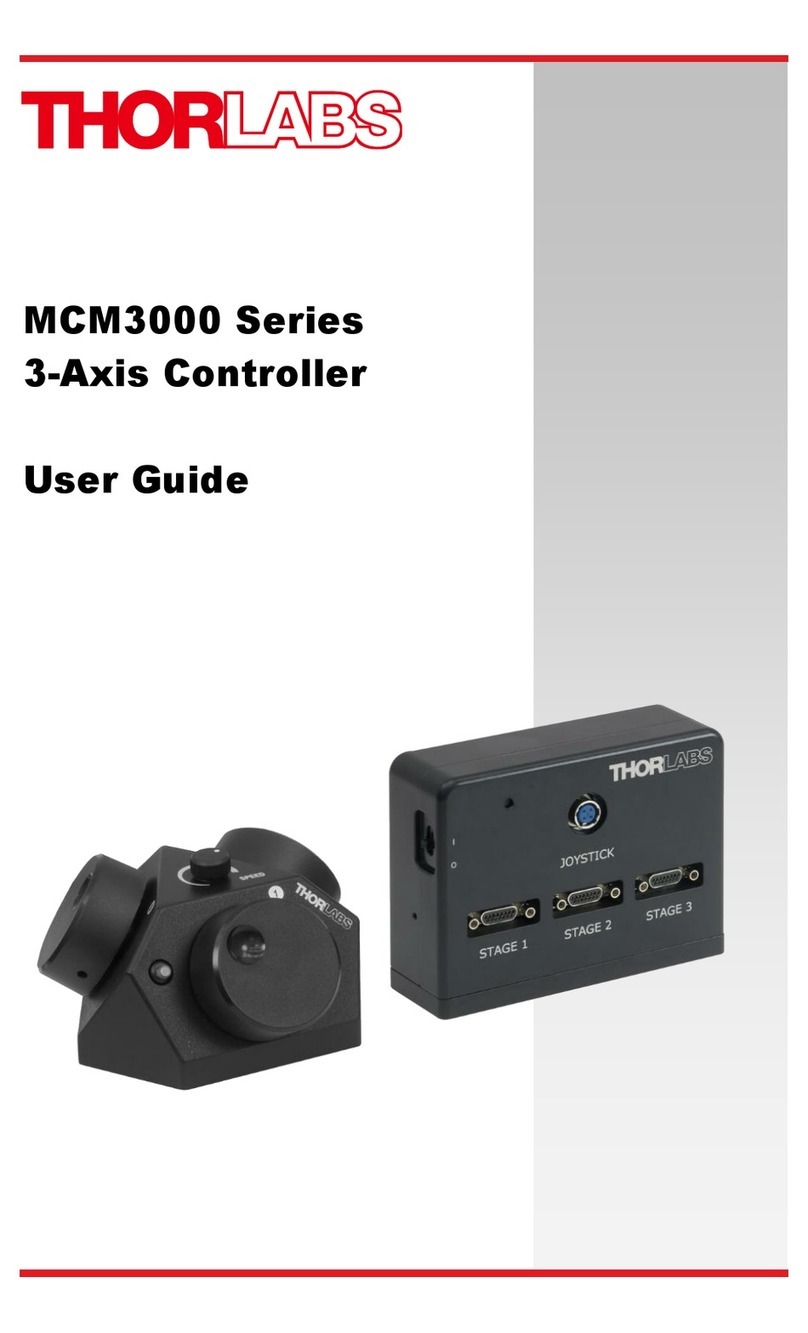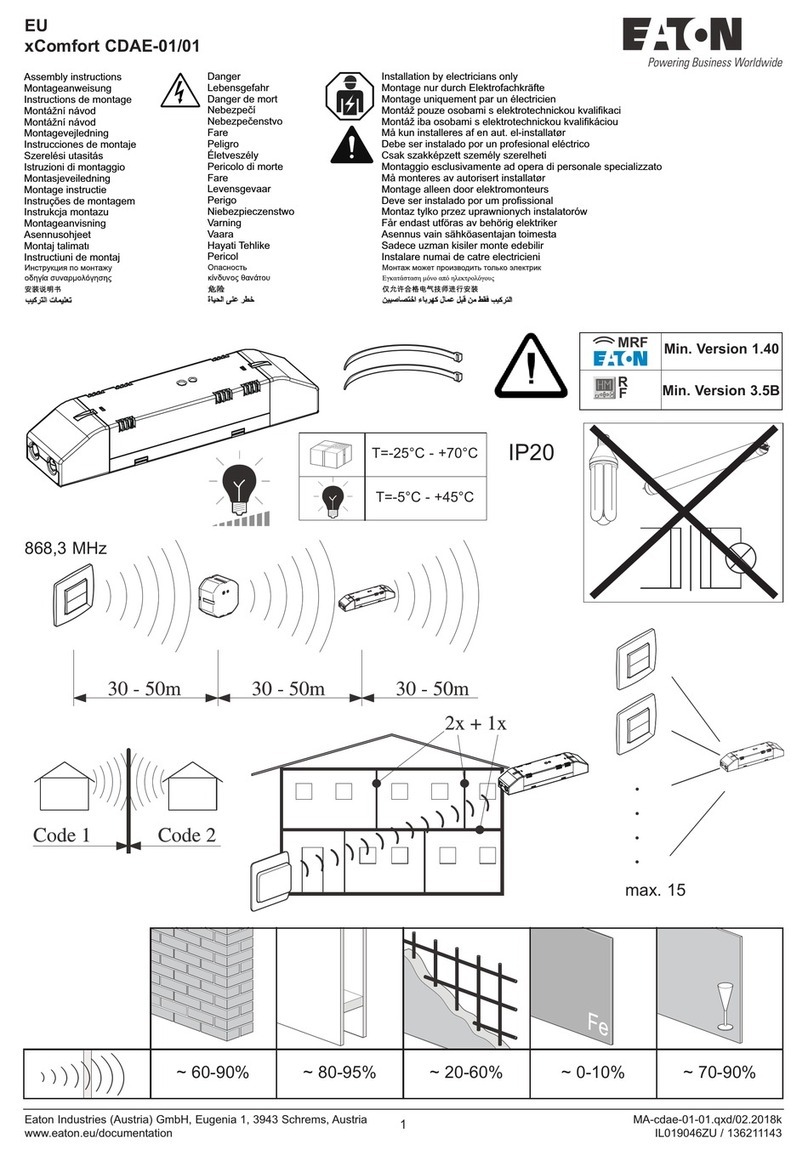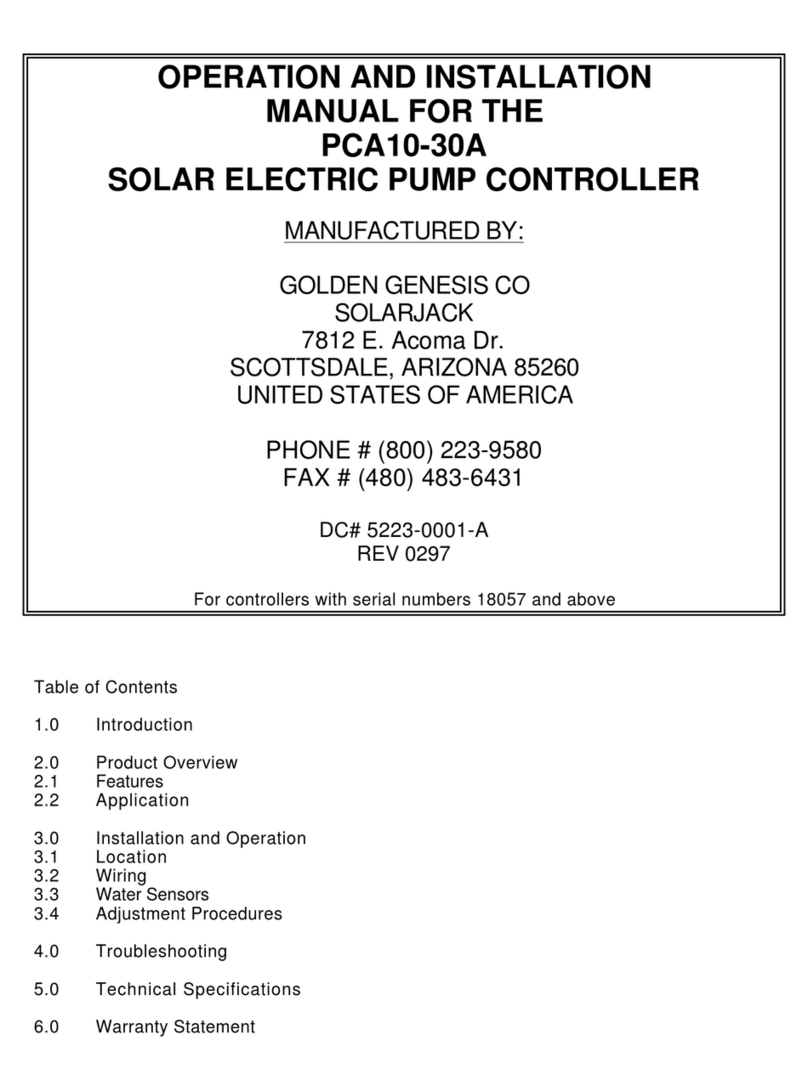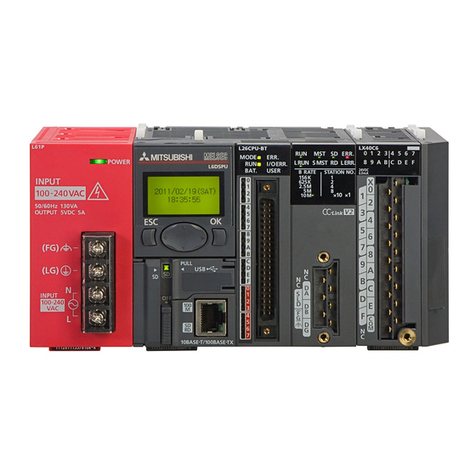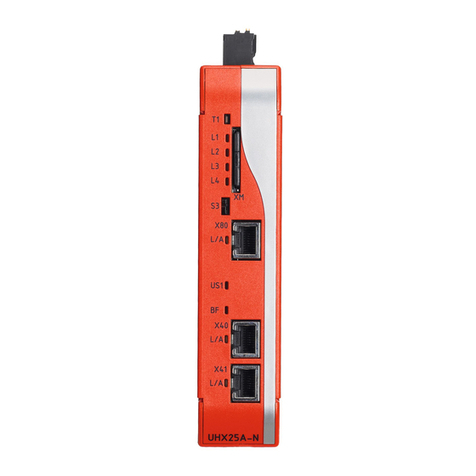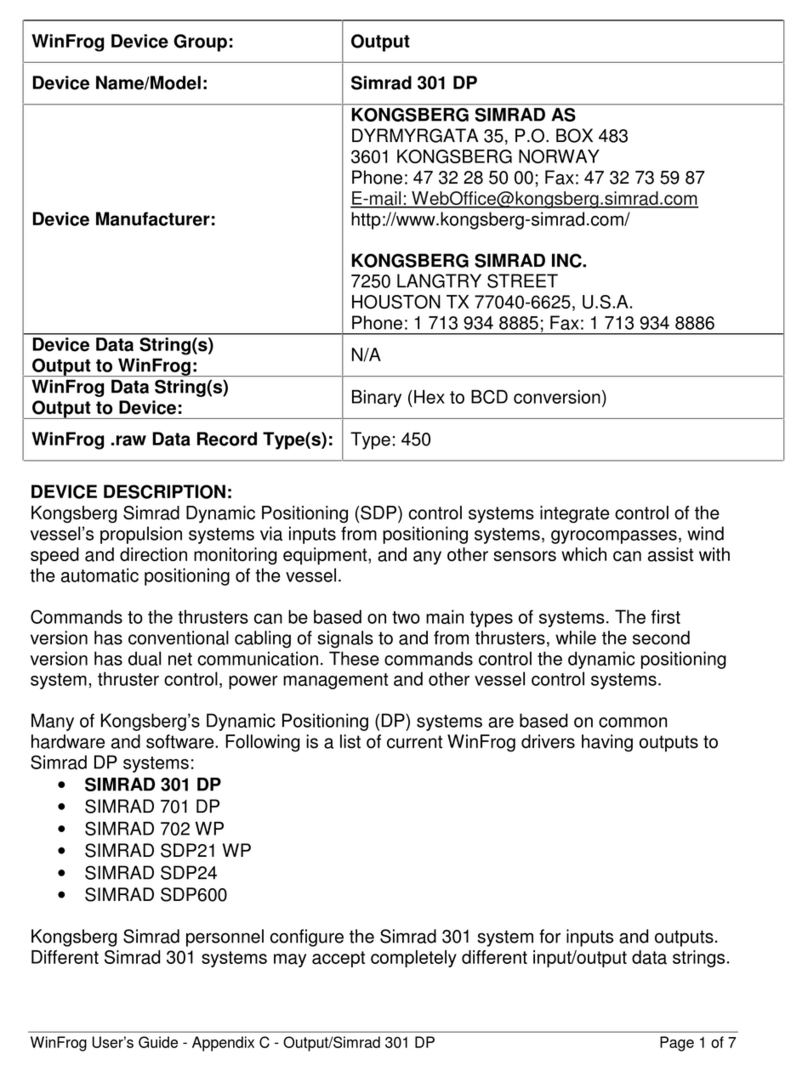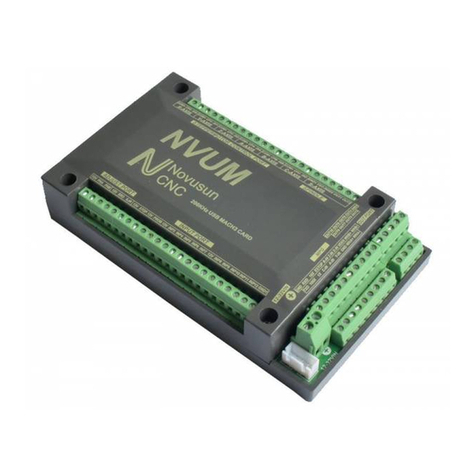Protege PRT-CTRL User manual

PRT-CTRL
Integrated System Controller
Installation Manual


1
Protégé System Controller Installation Manual
3
3
3
4
4
5
5
7
7
7
7
8
8
9
10
11
11
13
13
14
16
16
16
17
19
19
19
19
21
21
21
21
22
22
22
22
22
22
22
CONTENTS
ProtégéSystem
Introduction .........................................................................................
Controller .................................................................................................
Features .................................................................................................
Controller Specifications .............................................................................
Protégé System Management Suite ..........................................................
Protégé Modules .......................................................................................
Installation
Package Contents ........................................................................................
Location and Mounting ...........................................................................
Cabinet Tamper Switch ............................................................................
Earth Ground Connection ...........................................................................
AC Power ...............................................................................................
Backup Battery .......................................................................................
Battery Charging Current ...............................................................................
Status Indicator Output ...........................................................................
Encrypted Module Network ...............................................................................
Telephone Dialler ........................................................................................
Expansion Connector ..............................................................................
Ethernet 10/100 Network Interface .........................................................
ZoneInputs
Introduction ......................................................................................
Zone Inputs .....................................................................................
Trouble Zone Inputs ............................................................................
ProgrammableOutputs
Introduction .......................................................................................
Bell/Siren PGM Outputs ............................................................................
PGM 3 and 4 Outputs .............................................................................
Configuration Switch
Introduction ..........................................................................................
Configuration Switch ...........................................................................
Factory Default Controller .............................................................................
StatusIndication
Introduction .......................................................................................
Status Indicator ..........................................................................................
Fault Indicator .......................................................................................
Charge/Test Indicator .............................................................................
Auxiliary OK Indicator ...........................................................................
AC OK Indicator ........................................................................................

2 Protégé System Controller Installation Manual
23
23
23
23
23
23
24
24
24
24
25
26
26
26
27
27
27
30
30
31
31
31
5V Isolated Power Indicator .....................................................................
Bell 1/Bell 2 Indicators ...........................................................................
Network RX/TX Indicator ...........................................................................
Ethernet Link Indicator ...........................................................................
Ethernet 10/100 Indicator .................................................................
Ethernet Data Indicator ............................................................................
Controller BIOS Operation
Introduction .....................................................................................
Entering BIOS Operation .................................................................
BIOS Serial Communication .................................................................
BIOS Ethernet TCP/IP Communication .........................................................
BIOS Main Menu .....................................................................................
BIOS Setup Menu .....................................................................................
BIOS Testing Menu .......................................................................................
BIOS Firmware Menu ...........................................................................
BIOS Firmware Version Information ..........................................................
BIOS Firmware Update ..........................................................................
OrderingInformation
Product Codes .....................................................................................
Warranty
Introduction .....................................................................................
Contact ................................................................................................

3
Protégé System Controller Installation Manual
PROTÉGÉ SYSTEM
Introduction
The Protégé System is a powerful integrated alarm and access control management system
designed to provide integration with building automation, apartment complex control and
HVAC in one flexible package. Communicating through a proprietary high speed protocol
across an encrypted RS-485 network using modular-based hardware design, system installers
have the flexibility to accommodate any installation from small or large, residential or
commercial.
Controller
The PRT-CTRL Protégé System Controller is the central processing unit of the Protégé System.
The Protégé System Controller communicates with all system modules, stores all
configuration and transaction information, process's all system communication and reports
alarms and system activity to a monitoring station or remote computer.
Figure 1 – Protégé System Controller PCB Reference
Flexible module network architecture allows large numbers of modules to be connected to the
RS-485 Module Network. Keypad Interface, Zone Expander, PGM (Programmable Outputs)
Expander and Reader Interface modules communicate with the controller through the
encrypted secure RS-485 Module Network. Up to 250 modules can be connected to the
Protégé System Controller in any combination to the network up to a distance of 900M

4 Protégé System Controller Installation Manual
(3000ft). Communication beyond this distance requires the use of a RS-485 Network
Extender.
Securing a network prevents the removal, substitution or addition of modules to the module
network ensuring system integrity.
Features
•Secure Encrypted RS-485 Module Communications
•Onboard Ethernet 10/100M Interface
•16 On Board Zone Inputs
•2 Bell/Siren PGM Outputs
•1.8A Switching Power Supply
•Intelligent Battery Charge Algorithm and Monitoring
•Upload Download for programming and control of local and remote sites
•Online and Remote upgradeable firmware
•2400Bps Modem Communication
•All Major Alarm Reporting Formats
Controller Specifications
The following specifications are important and vital to the correct operation of the
PRT-CTRL Protégé System Controller. Failure to adhere to the specifications will
result in any warranty or guarantee that was provided becoming null and void.
Integrated Control Technology continually strives to increase the performance of its products
and as a result the specifications may change without notice. It is recommended that you
always consult www.integratedcontroltechnology.com for the latest documentation and
product information.
Power Supply
AC Input Voltage 16VAC 50/60Hz @ 40VA (Max)
Operating Current 280mA (Typical)
DC Output (Auxiliary) 1.2A (Max)
Battery Charging 350mA/700mA
Battery Low 10.5VDC
Battery Restore 11.5VDC
Communication
Ethernet 10/100 Auto Negotiation
RS-485 IsolatedModuleNetwork
Modem Security Reporting
Upload Download 2400Bps
DialUpNetworking
Outputs
Bell Outputs 2 (PGM Outputs)
1.8A (Max), 2A Electronic Shutdown
Load 2 8 Ohm 20W Siren
Low Current PGM Outputs 2 50mA (Max) Open Collector
Status Output 50mA (Max) Open Collector
Inputs
Zone 16 (500ms to 40sec Input Speed)
Tamper 1(NormallyClosed)
TroubleZone 64

5
Protégé System Controller Installation Manual
Dimensions
PCB Dimensions 183mm X 234mm
7.2"X9.2"
Enclosure 330mm X 406mm X 89mm
13" X 16" X 3.5"
Temperature
Operating 5˚- 55˚Celsius
41˚- 131˚Fahrenheit
Humidity 0%-85% (Non-Condensing)
Storage -10˚- 85˚Celsius
14˚- 185˚Fahrenheit
Miscellaneous
Expansion Connection Yes (Memory / Communication)
It is important that the unit is installed in a dry cool location that is not affected by
humidity. Do not locate the unit in air conditioning or a boiler room that can exceed
the temperature or humidity specifications.
The isolated communications interface on the Protégé System Controller uses full
galvanic isolation to prevent ground loop noise and cross phase ground differential.
This is a very important feature of the product family and the correct connection of
power to this isolated section will ensure the correct operation of the
communications network. Failure to apply power to the communication interface
will prevent the operation of the communication interface.
Protégé System Management Suite
The Protégé SMGT application is a Windows 2000/XP Professional Integrated Access Control
and Alarm Management system designed for any configuration from single site, single
controller applications up to the global multi-national corporations using multiple site, multiple
controller installations.
The Protégé SMGT application is designed for efficient configuration and management of your
Protégé installation. Special built in features and the quick-start kit will get your system up
and running in minutes.
Protégé Modules
The Protégé System can be expanded to accommodate large numbers of modules using the
encrypted RS-485 network. Modules that are currently available are listed below. Visit the
Integrated Control Technology website www.integratedcontroltechnology.com for the latest
Protégé module and product information.
Alphanumeric LCD User Interface (PRT-KLCD)
The Protégé LCD User Interface Keypad is the interface between the user and the
Protégé System. All programming and end user functions can be performed using the
LCD Keypad. The 32 character alphanumeric display uses easy to read messages and
menus to guide users through the systems operation. The LCD Keypad also adds two
zones (four zones in multiple zone configuration) and one PGM to the Protégé System.
16 Zone Expansion Module (PRT-ZX16)
Extends the Protégé System with the addition of 16 Zones and 4 Programmable
Outputs (PGM's). Operates from 16VAC with onboard power supply and isolated
communication interface.

6 Protégé System Controller Installation Manual
16 Zone Standard Expansion Module (PRT-ZXS16)
Extends the Protégé System with the addition of 16 Zones and 1 Programmable
Output (PGM). Operates from 12VDC network connection. No onboard power supply.
16 PGM Expansion Module (PRT-PX16)
Extends the Protégé System with the addition of 16 Programmable Outputs (PGM's)
(16 7A FORM C Relays). The PRT-PX16 can be connected to the slave communications
interface of the PRT-RDI2 2 Reader Expansion Module for FULL monitored elevator
control with the addition of the PRT-DRI Destination Reporting Interface Optical Input
Module.
16 PGM Standard Expansion Module (PRT-PXS16)
Extends the Protégé System with the addition of 16 Programmable Outputs (PGM's)
(16 20mA Open Collector Outputs). Operates from 12VDC network connection. No
onboard power supply.
Ethernet Intelligent 2 Reader Expansion Module (PRT-RDE2)
Communicating over a high speed interface using 10/100 Ethernet, interface
connection for two card readers, either Wiegand or Magnetic Stripe formats. Four
Wiegand Card Readers can be connected in Multiple Card mode. The 2 Reader Ethernet
Expansion Module also adds 8 Zones and 8 Outputs to the Protégé System. Some of
the outputs on the PRT-RDE2 have specific access control functions and can be used as
zones in the Protégé alarm processing functions.
Intelligent 2 Reader Expansion Module (PRT-RDI2)
Adds the interface connection for two card readers, either Wiegand or Magnetic Stripe
formats. Four Wiegand Card Readers can be connected in Multiple Card mode. The 2
Reader Expansion Modules also adds 8 Zones and 8 Outputs to the Protégé System.
Some of the outputs on the PRT-RDI2 have specific access control functions and can
be used as zones in the Protégé alarm processing functions.
Mini 2 Reader Expansion Module (PRT-RDM2)
Adds the interface connection for two card readers, either Wiegand or Magnetic Stripe
formats. Four Wiegand Card Readers can be connected in Multiple Card mode. The 2
Reader Expansion Modules also adds 6 Zones and 8 Outputs to the Protégé System.
Some of the outputs on the PRT-RDM2 have specific access control functions and can
be used as zones in the Protégé alarm processing functions.
Analog 4 Channel Input Expansion Module (PRT-ADC4)
Protégé allows the connection of the latest building automation technology and
completely integrated building automation solutions. Adds 4 Analog Inputs (4-20mA or
0-10V) allowing the connection of numerous industrial automation sensors. The Analog
Input Expansion Modules also adds 4 PGM Outputs to the Protégé System.
Analog 4 Channel Output Expansion Module (PRT-DAC4)
Protégé allows the connection of the latest building automation technology and
completely integrated building automation solutions. Adds 4 Analog Outputs (4-20mA
or 0-10V) allowing the connection of numerous industrial automation outputs including
air damper and sun louver controls as well as analog flow valves. The Analog Output
Expansion Modules also adds 4 PGM Outputs to the Protégé System.

7
Protégé System Controller Installation Manual
INSTALLATION
Package Contents
When receiving the PRT-CTRL Protégé System Controller you should find the kit contains the
items listed below. The kit type is clearly labelled on the packaging. Please note that if you do
not have the correct contents contact your distributor immediately.
PRT-CTRL-PCB Protégé System Controller PCB Only
Contents: Controller Printed Circuit Board
PlasticMountingStandoffs
36 1K Ohm Resistors
Red/Black Backup Battery Wires
Location and Mounting
The Protégé System Controller is available as a PCB Only (Printed Circuit Board) or complete
unit supplied with a metal cabinet. It is recommended that the cabinet provided be used
where possible, as this provides the best mounting and installation solution as well as the
required cable entry and termination space.
When installing the Protégé System Controller ensure that there is adequate clearance around
all sides of the enclosure and air flow to the vents of the enclosure are not restricted.
It is recommended to install the Protégé System Controller in a location that will facilitate
easy access for wiring. It is also recommended that the Protégé System Controller is installed
in electrical rooms, communication equipment rooms, closets or in an accessible area of the
ceiling.
1. Insert the plastic stand-offs in to the locations to mount the PCB board.
2. Calculate the location and position of the enclosure and mark the holes for the keyhole
points in the top left and right locations. This will allow you to screw in the screws and
then hang the box on them adjusting the location to suit.
3. Ensure a solid fixing point and screw in the two screws. Before tightening the top
screws insert the tamper bracket in the slot provided on the right side of the
enclosure.
4. Fix the enclosure securely using the remaining mounting holes on the bottom left,
right and centre of the enclosure.
5. If you are extending the System Controller by the addition of a communications
module or memory interface insert the 4 extended nylon standoffs through the rear of
the controller PCB as shown in the interface board manual.
6. Insert the PCB in to the enclosure and mount using the plastic standoffs inserted
during step one.
It is recommended to install the enclosure when the circuit board is NOT installed
on the plastic stand-offs as this will reduce the risk of damage caused by debris
during the installation.
Cabinet Tamper Switch
The enclosure tamper input signals to the monitoring station or remote computer that an
enclosure has been opened. The tamper input switch should be mounted into the steel

8 Protégé System Controller Installation Manual
bracket provided and connected to the tamper connection terminals as shown in the diagram
below.
Figure 2 - Tamper Input
Earth Ground Connection
The controller has a connection for earth ground. For best results a cold water pipe should be
used with a pipe wiring clamp. If a cold water pipe is not available connect to a suitable
ground connection in the installation.
A minimum 14AWG solid copper wire should be used from the controller's earth connection
point to the clamp on the cold water pipe. If other earth clamps are present at the same
connection point connect the clamp below the existing units.
Figure 3 - Controller Main Earth Ground Connections
The telephone communication dialler contains a separate earth connection. Do not
loop the earth connection from the dialler to the earth of the controller. A separate
connection should be connected to the same earth point.
AC Power
The controller should be supplied by a dedicated electrical power source rated for a minimum
10Amp Load and have a dedicated circuit breaker. Do not use a switch controlled breaker or a
switched electrical point to supply electrical power. Connect the primary of a 16.5VAC,
50/60Hz, 40VA Transformer to the electrical circuit and run the secondary to the AC input on
the controller terminals.

9
Protégé System Controller Installation Manual
Figure 4 - AC Transformer 16VAC, 50/60Hz, 40VA MAX
Specific regional regulations may allow the transformer to be mounted inside the enclosure.
In this case wire the electrical circuit to the electrical termination point inside the enclosure
and the secondary wires of the transformer to the AC Input on the controller. The earth wire
should be routed to the terminal on the controller PCB when using an internal transformer.
Termination of wiring to the controller while power is applied or the battery is
connected may cause serious damage to the controller and will VOID ALL
WARRANTEES OR GUARANTEES. Power the unit ONLY after all wiring, configuration
and jumper settings are completed.
Backup Battery
It is recommended that a minimum of a 4Ah battery is used as the main backup battery.
From the accessory bag provided, connect the RED and BLACK battery termination wires to
the B+ and B- terminals. Connect the spade terminals to the battery as shown below.
Connection of the battery in reverse will not damage the System Controller but will cause the
battery fuse (5A Fast Blow) to blow and require replacement.
Figure 5 - Battery Connection
The battery test procedure uses a special algorithm to prevent deep discharge and increase
battery endurance. A dynamic battery test is performed every ten minutes (default0) when
AC power is present and a battery condition alarm will be generated if the battery is either
disconnected or shows poor capacity. Battery fault conditions will activate the battery trouble
zone.

10 Protégé System Controller Installation Manual
If AC is not present the Protégé System Controller will monitor the battery for a low voltage
level and will activate the battery trouble zone. The next dynamic battery test will occur 30
minutes after AC power has been restored. This delay allows the battery to achieve optimal
charging during the first 30 minutes that power has been restored to the unit. Once the first
test is completed the dynamic testing will return to the programmed value (default 10
minutes).
When power is first applied to the Protégé System Controller a dynamic battery test will be
performed after 30 seconds, this allows the status and condition of the battery to be
detected. On completion of this first test the default testing period of 10 minutes will be
resumed, this is a programmable setting in the system controller panel options. The test
period can be changed as required by setting the battery test time in the controller
configuration menu.
Battery Charge Current Setting
Battery charging can be controlled by the charging configuration option programmed in the
Panel Options menu (Default) or by the configuration of the battery charging jumper. To
configure the controller manually for the charge current, select the appropriate battery
current limit setting using the jumper as shown in the figures below.
Figure 6 - Battery Charge 350mA Setting
Figure 7 - Battery Charge 700mA Setting
Status Indicator
The status output will activate according to the status indicator on the Protégé System
Controller and can be used to provide signalling or indication of the system controller status
outside the enclosure. The following diagrams show the connection of an LED indicator to the
status output.

11
Protégé System Controller Installation Manual
Figure 8 - External Status LED Connection
Encrypted Module Network
The Protégé System Controller incorporates technically advanced encrypted RS-485
communications technology. The isolated communications interface offers full galvanic
isolation to prevent ground loop noise and cross phase ground differential. The
communication offers superior interference immunity.
Connection of the communications should be performed according to the following diagram. It
is important that the 12V Communications power be supplied from the controller or
controlling device or from an independent battery backed power supply unit.
Figure 9 - Standard Communications Connection
Always connect the controllers NA and NB terminals to the NA and NB terminals of the
expansion devices and keypads as shown. The N+ and N- must go to a 12V power supply
source as shown in the following diagram.

12 Protégé System Controller Installation Manual
Figure 10 - Network Power Supplied By System Controller
The EOL (End Of Line) jumper setting MUST be set in the ON position for the FIRST
and LAST expansion device only.
Figure 11 - EOL Jumper ON Figure 12 - EOL Jumper OFF
The 12V N+ and N- Communication input must be supplied from only ONE point.
Connections from more than one 12V supply may cause failure or damage to the
units supplying power.
The Network BIAS configuration jumpers allow the communication network to be biased using
a high or Low (Default) resistance.
Figure 13 - Network LOW resistance BIAS (Default) Configuration

13
Protégé System Controller Installation Manual
Figure 14 - Network HIGH resistance BIAS Configuration
Biasing the network with the controller in the LOW setting is the default
configuration. Only under special circumstances should the BIAS jumpers be
changed from Factory Default.
Telephone Dialler
The Protégé System Controller provides the ability to communicate alarms and
upload/download information with remote systems using the onboard 2400Bps modem. The
telephone lines can be connected directly to the Protégé System Controller using the onboard
telephone connection terminals.
The secondary telephone line terminals can be used as a backup telephone line. If the
Reporting Service fails and the Controller is unable to communicate with the central station
through the primary telephone line, the Protégé System Controller will switch to the second
line (if programmed) and repeat the communication process (refer to the Service
programming section in the Protégé System Reference Manual for settings that relate to
reporting and communication).
Figure 15 - Telephone Line Connection
It is recommended that the earth connection for the telephone and main power
supply (refer section Earth Ground Connection in Page 8) earth be run separately
and should be terminated on the cold water pipe or similar grounding point within
the installation.
The secondary telephone connection is optional and only required if the secondary
line option is enabled. For more information refer to the Protégé System Controller
Reference Manual.
Expansion Connector
The Protégé System Controller includes a 40 way expansion connector that is used to connect
serial communication, parallel, memory and special function interface devices. Connect the
interface card to the Protégé System Controller as shown in the following diagrams. For
configuration information refer to the Protégé Reference Manual and the Installation
Instructions provided with the interface device.

14 Protégé System Controller Installation Manual
Figure 16 - Expansion Connector and Mounting Hole Location
When installing the daughter board ensure that the plastic mounting hardware provided is
correctly inserted from the rear of the system controller PCB. Pay attention to the key location
of the 40 Way Connector.
Figure 17 - Connection and Mounting
Power to the system controller MUST be turned off when connecting any hardware
or system device to the system controller. Failure to do so may damage the system
controller and expansion device.
Ethernet 10/100 Network Interface
The communication between the Protégé SMGT System Management Suite and the Protégé
System Controller uses a 10/100 ethernet network operating the TCP/IP protocol suite. The IP
address of the controller can be configured using the LCD Keypad Terminal. The default IP
address is set to a static IP address of 192.168.1.2 with a subnet mask of 255.255.255.0.
These IP address settings are commonly used for internal networks.
Installing the Protégé System Controller on an active network requires knowledge
of the configuration and structure for the network. Always consult the network or
system administrator and ask them to provide you with a fixed IP address that can
be assigned to the Protégé System Controller.
When installing an ethernet connection the Protégé System controller should be interfaced
using a standard segment (<100M in length) and should be connected to a suitable ethernet
hub or switch.

15
Protégé System Controller Installation Manual
Figure 18 - Ethernet 10/100 Switch/Hub Connection
Temporary direct connections can be used for onsite programming by using a standard
ethernet crossover cable.
Figure 19 - Ethernet 10/100 Direct Connection

16 Protégé System Controller Installation Manual
ZONE INPUTS
Introduction
The Protégé System Controller has 16 Zone Inputs. The controller also monitors 64 trouble
zones used to report trouble conditions. A trouble zone represents a trouble condition within
the system. The trouble zone will open or go in to alarm when that trouble condition is
present, and close or return to normal when the trouble condition restores. As an example
trouble zone CP001:01 will open or go in to alarm when the tamper input on the system
controller is open.
The Protégé System Controller can monitor and control thousands of zone and trouble zone
inputs by using the expansion modules.
Zone Inputs
The Protégé System Controller can monitor the state of up to 16 zone inputs such as
magnetic contacts, motion detectors and temperature sensors. Devices connected to these
zones can be installed to a maximum distance of 300m (1000ft) from the Controller when
using 22 AWG. The Controller supports normally opened and normally closed configurations
with or without EOL resistors as explained below.
Zones can be programmed from the Protégé LCD Keypad (PRT-KLCD) or using the Protégé
System Management Suite (PRT-SMGT). CP001:01 to CP001:16 represent Zone 1 to Zone 16
on the Protégé System Controller.
When using a zone with the EOL resistor configuration, the controller generates an alarm
condition when the state of a zone is toggled and generates a tamper alarm condition when a
wire fault (short circuit) or a cut (tampered) in the line occurs.
When using the EOL resistor configuration, the EOL resistor option must be turned on for the
zone(s) so that the tamper and shorted states can be monitored (refer to Zones Section in
the Protégé Reference Manual).
Zones default to require the EOL resistor configuration.
Figure 20 - EOL Resistor Zone Configuration

17
Protégé System Controller Installation Manual
Each zone input can use a different input configuration. To program a large number of zones
with a certain configuration use the Multiple Selection feature in the Protégé System
Management Suite application.
When using the No Resistor configuration, the Controller only monitors the opened and closed
state of the connected input device generating the alarm and seal conditions.
Figure 21 - No EOL Resistor Zone Configuration
Trouble Zone Inputs
Each Controller can monitor up to 64 local trouble zones. Trouble zones are used to monitor
the status of the Controller and in most cases not physically connected to an external zone.
For example, trouble zone CP001:03 is used to monitor the Controller’s backup battery
voltage and warn the Controller that the battery is disconnected or voltage is too low. This
can then be used to report a message to a monitoring station, remote computer, keypad or
siren.
The following table details the trouble zones that are configured in the system controller. The
trouble type and group define the trouble that is generated by the trouble zone when it is
activated.
Zone Number Description Type Group
CP001:01 Module Tamper System Tamper System
CP001:02 AC failure Power Fault General
CP001:03 Low Battery Power Fault General
CP001:04 Real Time Clock Not Set RTC/Clock Loss General
CP001:05 Service Report Test * *
CP001:06 Service Report Failure To
Communicate
Reporting Failure General
CP001:07 Phone Line Fault Phone Line Lost General
CP001:08 Auxiliary Failure Power Fault General
CP001:09 Bell 1 Cut/Tamper Bell/PGM Fault General
CP001:10 Bell 2 Cut/Tamper Bell/PGM Fault General
CP001:11 Bell 1 Over Current Bell/PGM Fault General
CP001:12 Bell 2 Over Current Bell/PGM Fault General
CP001:13 Module Communication Module Loss System
CP001:14 Module Network Security Module Security System
CP001:15 Expansion Device Missing Hardware Fault System
CP001:16 Communication Port 1 Fault Hardware Fault System
CP001:17 Communication Port 2 Fault Hardware Fault System

18 Protégé System Controller Installation Manual
CP001:18 Ethernet Hardware Fault Hardware Fault System
CP001:19 Ethernet Link Lost Hardware Fault System
CP001:20 DVAC Line Fault/Polling Error Hardware Fault System
CP001:21 ModBUS Communication Fault Hardware Fault System
CP001:22 Protégé SMGT Remote Access Hardware Fault System
CP001:23 Installer Logged In Hardware Fault System
CP001:24 Service 1 Stopped Hardware Fault System
CP001:25 Service 2 Stopped Hardware Fault System
CP001:26 Service 3 Stopped Hardware Fault System
CP001:27 Service 4 Stopped Hardware Fault System
CP001:28 Reserved * *
| | | | | | | |
CP001:64 Reserved * *
Other manuals for PRT-CTRL
1
Table of contents
Other Protege Controllers manuals
Popular Controllers manuals by other brands
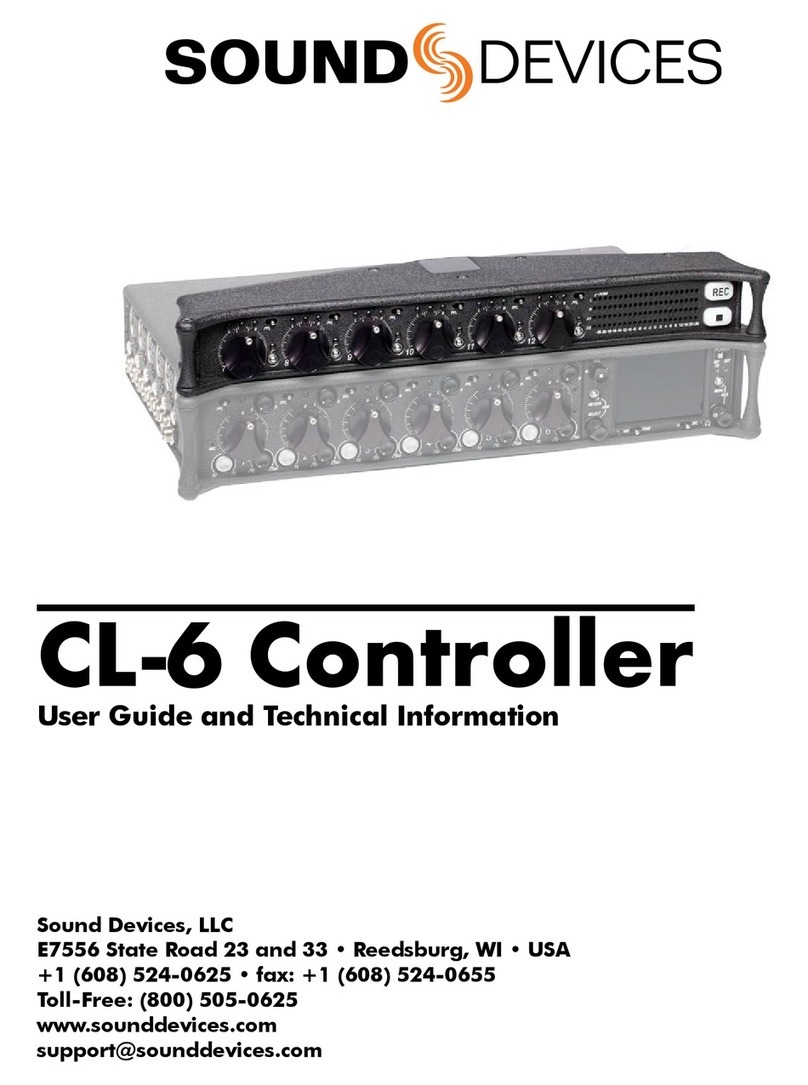
Sound Devices
Sound Devices CL-6 user guide
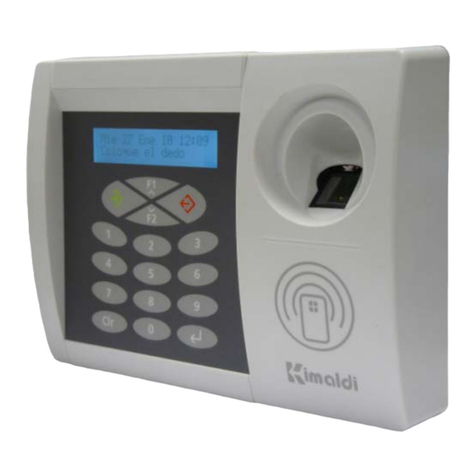
Kimaldi
Kimaldi BioMax2 Installation and programming manual
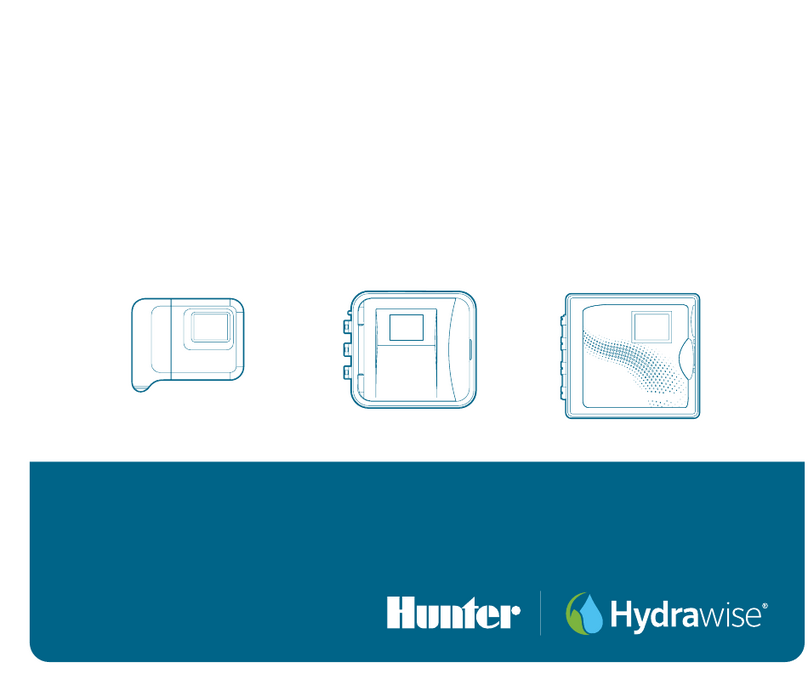
Hunter
Hunter Hydrawise HC-1200M installation guide
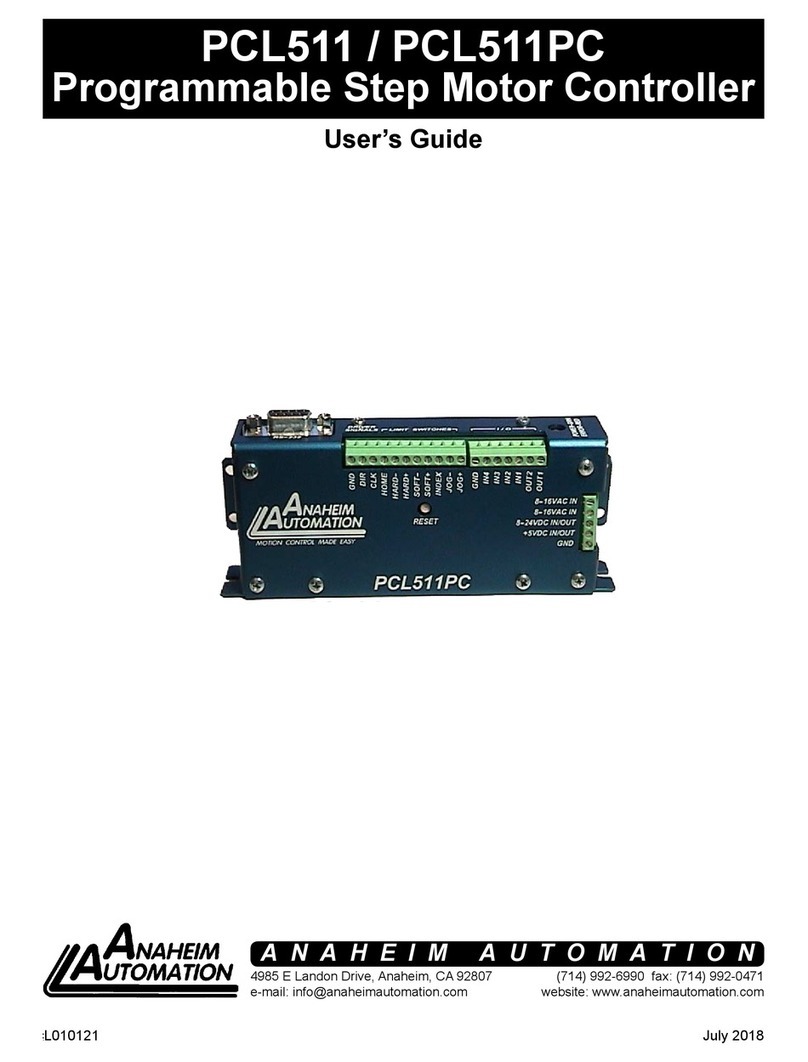
Anaheim Automation
Anaheim Automation PCL511 user guide
Anolis
Anolis ArcPower Rack Unit Pixel CE: ArcPower Rack Unit Pixel... user manual
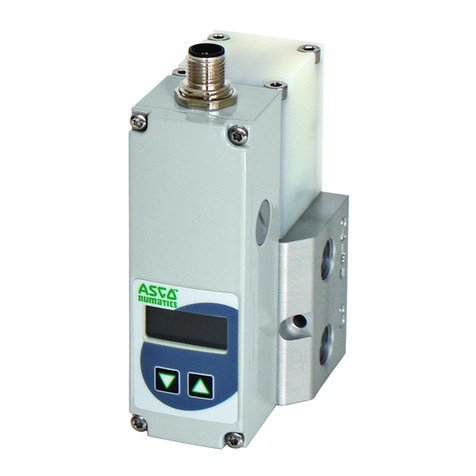
Emerson
Emerson Asco Sentronic LP 617 Series installation manual
